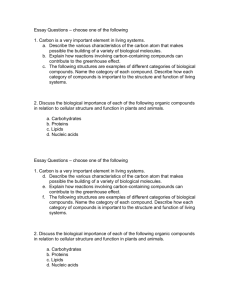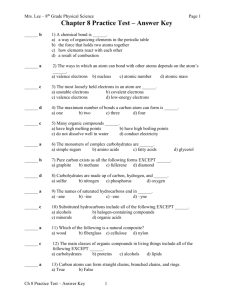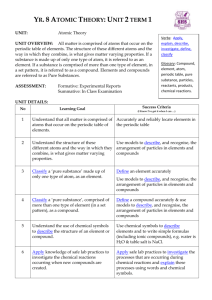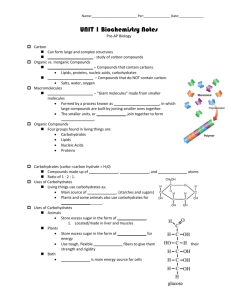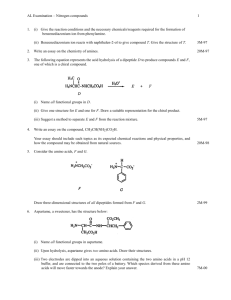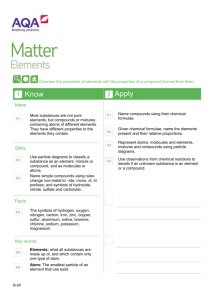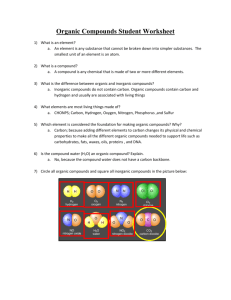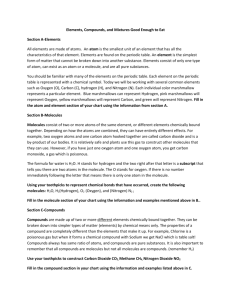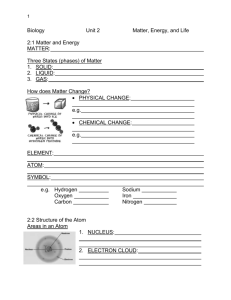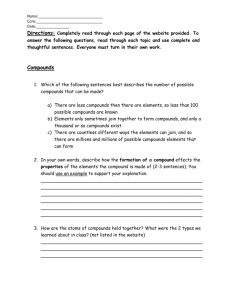CHEMICAL COMPOUNDS IN CELLS
advertisement
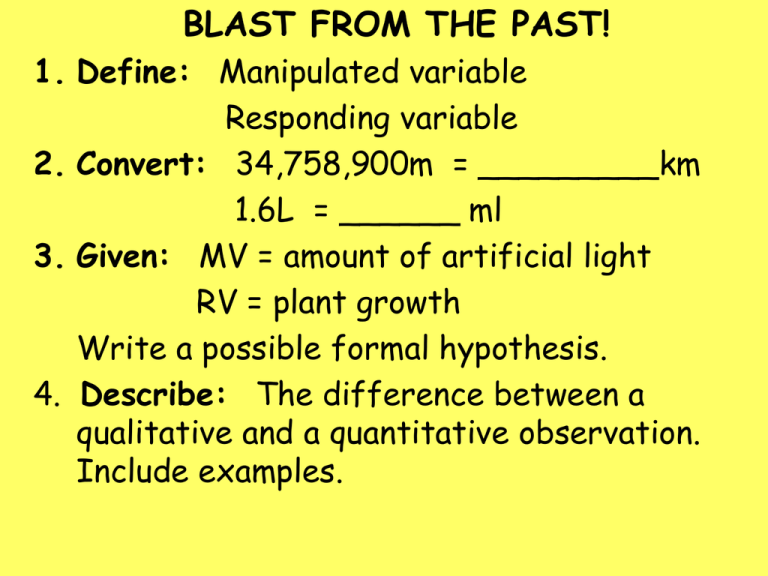
BLAST FROM THE PAST! 1. Define: Manipulated variable Responding variable 2. Convert: 34,758,900m = _________km 1.6L = ______ ml 3. Given: MV = amount of artificial light RV = plant growth Write a possible formal hypothesis. 4. Describe: The difference between a qualitative and a quantitative observation. Include examples. 1. Define: MV – variable that is changed on purpose by the scientists RV – variable that changes b/c of the MV; variable that is measured in the experiment. 2. Convert: KHD b/u dcm 34,758.9 km 1600mL 3. Hypothesis: If the amount of artificial light is related to plant growth, then increasing the amount of light will make the plant grow taller. 4. Describe: Qualitative Observation – Describing an object based on one’s 5 senses. Ex. The potato feels soft and bendy. Quantitative Observation – Describing an object based on some type of measurement. Ex. The potato has a mass of 1.7 g. CHEMICAL COMPOUNDS IN CELLS PAGES 74-78 IN TEXT BOOK So What’s an ELEMENT? • Any substance that cannot be broken down into simpler substances. Everything on this planet, living or nonliving, is made up of elements. • About 100 different elements are found on the Earth • Each element has its own characteristics and properties – Ex – Sulfur in its pure form is a yellow, solid, crystal. • The smallest unit of an element is an atom. Elements are only made up of one kind of atom. Before we can talk about “chemical compounds” in cells, we have to find out what a compound IS. • COMPOUND – two or more elements that combine. • This is one molecule of a compound called ammonia NH3 – 1 atom of Nitrogen – 3 atoms of Hydrogen Chemical compound called ammonia or NH3. This is a molecule of water • 1 atom of Oxygen • 2 atoms of Hydrogen How many atoms of each element do you see in this molecule of glucose? Compounds • Carbon dioxide CO2 • Water H2O • Sugar C6H12O6 • Salt NaCl • Hydrochloric acid HCl The Compound Called Water • • • • Water makes up about 2/3 of our body. All chemical reactions take place in water Water gives the cell its size and shape Water is also in the environment outside the cell as well Inorganic vs. Organic Compounds • Organic compounds: compounds that contain carbon (except CO2) – Example – glucose C6H12O6 • Inorganic compounds: compounds that DO NOT contain carbon – Examples – water (H2O), table salt (NaCl) Important Organic Compounds • The four main organic compounds found in all living things are: – – – – Carbohydrates Lipids Proteins Nucleic Acids • They all have one thing in common – they have the carbon atoms in them CARBOHYDRATES • Job: Give the cell energy • Simple carbohydrates are sugars (C, O, H) – Lactose – Sucrose – Glucose • Complex carbohydrates are starches. – Cellulose – plant cell walls are made up of cellulose – Starches stored in plants (potatoes, pasta, rice) LIPIDS • Job: Back up energy reserve for the cell. • Hydrophobic – cannot mix with water due to their structure • Cell membranes are made mainly of lipids PROTEINS • Job: Form parts of the cell membrane and make up many of the cell organelles • Made up of smaller molecules called amino acids – There are 20 amino acids – The structure and function of a protein depends on how many and in what order amino acids are found in the molecule. • Think of amino acids like letter in the alphabet A Special Type of Protein • Enzymes: type of protein that speeds up a chemical reaction in a living thing. – Acts like pouring gasoline on Cheese is made by inserting a fire. (Speeds up the enzymes into milk. reaction of the fire.) – Example: Enzymes in your saliva break down starch into sugars in your mouth, speeding up the digestion process. Enzymes are put in some detergents to help remove tough stains. They speed up the process of breaking down stains on our clothes. NUCLEIC ACIDS • Job: Holds instructions for everything that goes on in a cell. • Two kinds – DNA – carries information about an organism; passed from parent to offspring – RNA – plays a role in making proteins C, H, O , N, P

